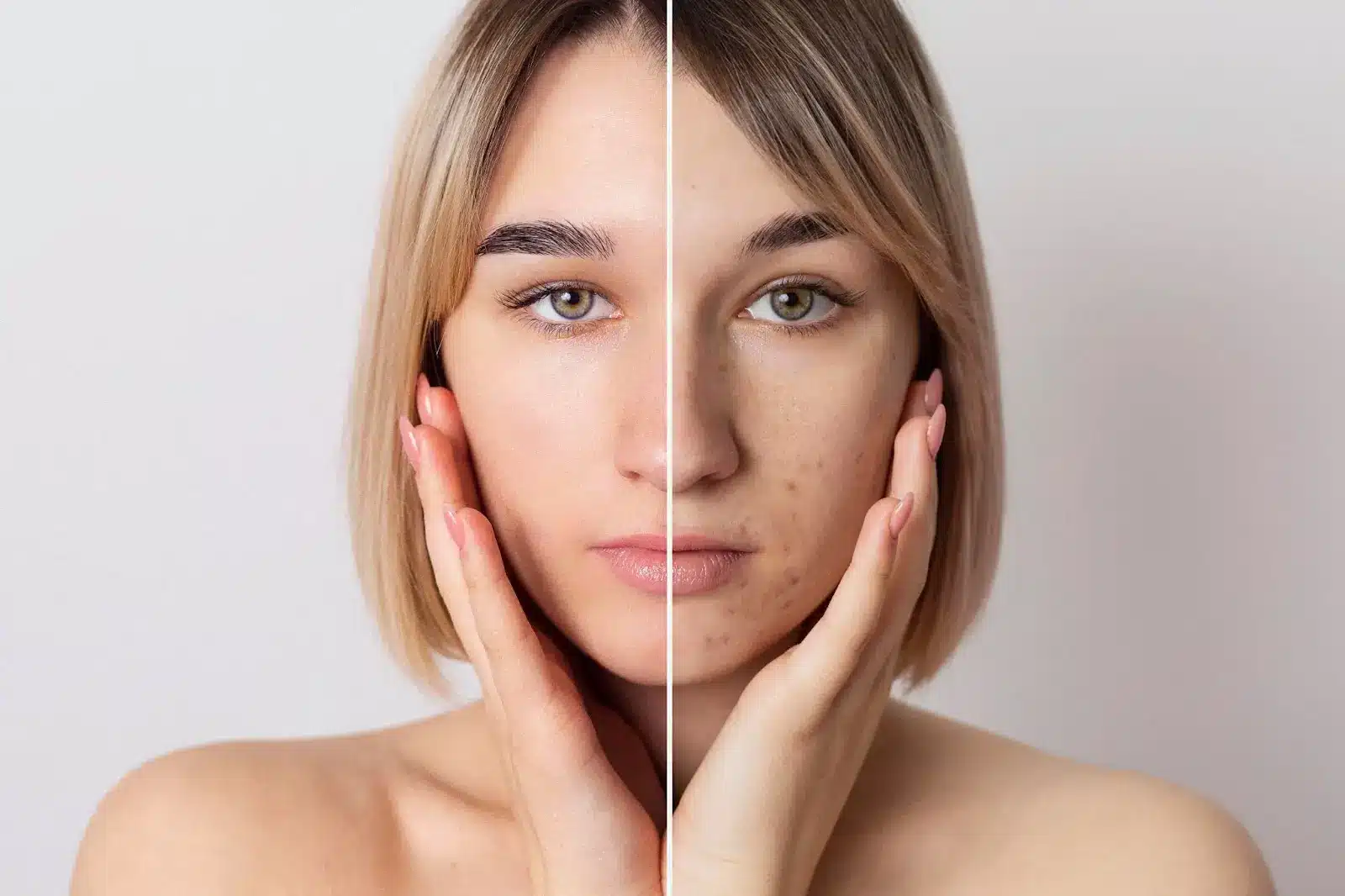
As the demand for gentle, regenerative skincare and cosmetic procedures continues to rise, biocompatibility has become a critical consideration in product development. Scientific studies emphasize that using biocompatible materials minimizes adverse reactions and ensures lasting harmony with human tissue, key to successful aesthetic treatments.
Plinest distinguishes itself by leveraging a substance naturally present in the body, working synergistically with the skin to promote renewal, hydration, and radiance over time rather than merely concealing imperfections. This approach aligns with the growing preference for treatments that support the skin’s intrinsic health and youthful vitality.
This article will provide a comprehensive overview of Plinest treatment, detailing its composition, mechanism of action, benefits, safety profile, and what patients can expect before, during, and after the procedure, helping readers make informed decisions about this innovative therapy.
Key Takeaways
- Plinest is a polynucleotide-based injectable derived from trout DNA fragments, purified using PN-HPT™ technology to ensure high biocompatibility and safety.
- Its mechanism focuses on stimulating fibroblast activity to increase collagen and elastin production, enhancing skin firmness, elasticity, and texture while improving microcirculation and lymphatic drainage.
- Plinest addresses a variety of concerns including facial rejuvenation, acne scars, stretch marks, neck and décolletage aging, and hand skin rejuvenation, as well as the delicate periorbital area.
- The treatment protocol typically involves 3 to 4 sessions spaced 3 weeks apart, followed by personalized maintenance sessions every 3 to 6 months to sustain collagen and elastin restoration.
- Side effects are generally mild and transient, including redness, swelling, bruising, and temporary sensitivity, with serious adverse events being extremely rare when administered by experienced professionals.
- Plinest can be safely combined with other aesthetic treatments such as laser therapy, microneedling, and PRP for enhanced skin rejuvenation outcomes.
About: Doctor Medica is your trusted supplier of top-quality dermal fillers, viscosupplements, and more for your medical practice. We offer genuine products from leading brands at the lowest prices in the market. If you’re looking to order Plinest online for your practice, contact Doctor Medica today.
Understanding Plinest: Composition and Mechanism

Plinest is an advanced biorevitalization injectable derived from DNA fragments of trout, purified using the proprietary PN-HPT™ (Highly Purified Polynucleotide Technology). This patented process ensures the final product contains only the purest, most biocompatible polynucleotides, free from proteins and impurities, making it highly effective and safe for clinical use.
These polynucleotides function as biological stimulators, activating fibroblast cells to boost the natural production of collagen and elastin, the essential proteins responsible for maintaining skin’s firmness, elasticity, and structural integrity. Beyond this, Plinest improves microcirculation by enhancing blood flow and lymphatic drainage in treated areas, helping to reduce skin concerns like dark pigmentation and puffiness due to fluid retention.
Through this regenerative, rather than volumizing, mechanism, Plinest rejuvenates skin from within, gradually restoring youthful resilience and smoothness while promoting long-term skin health.
Clinical Indications for Plinest Treatment

Plinest is versatile and suitable for a broad range of dermatological and cosmetic concerns, especially in patients showing early to moderate signs of skin aging or damage. Its regenerative properties help address the following:
- Facial Rejuvenation: Plinest reduces the appearance of fine lines and wrinkles, evens out skin tone, and enhances elasticity by stimulating collagen and elastin, resulting in a firmer, more radiant complexion.
- Acne Scarring: The treatment promotes skin healing and cell turnover, softening post-acne scars and creating a smoother surface.
- Stretch Marks: Plinest improves skin texture and elasticity in areas affected by stretch marks, supporting dermal remodeling and reducing their visibility from weight changes or pregnancy.
- Neck and Décolletage: It effectively revitalizes the delicate skin on the neck and upper chest, decreasing creases and signs of laxity, while enhancing hydration and resilience.
- Hands: Ideal for restoring youthfulness, Plinest thickens the dermal layer and improves skin texture, reducing dryness and fine lines linked with aging.
- Around the Eyes: Plinest Eye is a specialized formulation that targets the sensitive periorbital area, addressing issues like dark circles, puffiness, and fine lines with the same high standards of safety and efficacy as the full-face treatment.
Moreover, Plinest’s non-volumizing nature makes it an excellent adjunct to other cosmetic procedures, including lasers, microneedling, or PRP, allowing synergistic enhancement of overall skin quality without compromising natural contours.
Administration Protocol for Plinest
Plinest is administered via microinjections into the superficial or deep dermis, depending on treatment objectives and target areas. The provider customizes injection depth and technique based on skin condition and desired outcomes.
| Treatment Element | Details |
| Treatment Frequency | A typical Plinest treatment plan consists of 3 to 4 sessions, each spaced approximately 3 weeks apart. This allows the skin time to respond and regenerate naturally. |
| Injection Method | Plinest is administered intradermally using techniques such as microbolus, mesotherapy, or linear threading to ensure even distribution and targeted delivery. |
| Maintenance Plan | To sustain results, patients may undergo maintenance sessions every 3 to 6 months, tailored to their skin’s condition, lifestyle, and rate of aging. |
Each session lasts roughly 20 to 30 minutes. Mild discomfort may occur but can be mitigated with topical numbing creams. The procedure requires minimal downtime, enabling patients to resume daily activities shortly afterward.
Adhering to the recommended protocol optimizes collagen and elastin production, yielding a natural, gradual improvement in skin quality and youthful appearance.
Safety Profile and Side Effects of Plinest
One of the core strengths of Plinest is its exceptional safety profile. The high purity and biocompatibility of its polynucleotides facilitate excellent integration with the skin’s natural tissues. They also minimize the risk of adverse reactions. Most patients experience only mild, transient side effects, such as:
- Redness or erythema at injection sites; typically resolving within hours.
- Mild swelling or puffiness that fades quickly without intervention.
- Slight tenderness or bruising, especially in sensitive areas like under the eyes; usually disappearing within days.
- Occasional itching or a sensation of tightness shortly after treatment.
- Minor pinprick marks immediately post-injection that fade rapidly.
- Temporary increased skin sensitivity to touch or skincare products.
Serious side effects, such as prolonged swelling or discoloration, are extremely rare. They are often linked to improper injection technique or underlying health issues. This highlights the importance of treatment by experienced medical professionals adhering to strict hygiene and procedural protocols.
Conclusion
Plinest treatment epitomizes the forefront of regenerative aesthetics. Combining a high safety profile with a natural, biologically driven mechanism of action, it addresses a broad spectrum of skin concerns while delivering subtle, long-lasting rejuvenation. Whether administered alone or alongside complementary procedures, Plinest offers both men and women a dependable path to restoring youthful skin quality without altering facial structure.
As the trend toward biocompatible and preventive skincare accelerates, Plinest’s innovative polynucleotide technology positions it as a mainstay in modern aesthetic medicine.
FAQs
1. How soon will I see results after Plinest treatment?
You may begin noticing subtle improvements within a few weeks. Optimal results typically appear after completing the full course of 3–4 sessions.
2. Is Plinest suitable for sensitive skin?
Yes, thanks to its high purity and biocompatibility. However, it’s best to consult a medical provider if you have any skin sensitivities or allergies, especially to seafood.
3. Can Plinest be combined with other treatments?
Absolutely. It pairs well with microneedling, PRP, laser therapy, and botulinum toxin treatments, enhancing overall results.
4. What is the difference between Plinest and dermal fillers?
Unlike fillers, Plinest doesn’t add volume. It works by regenerating the skin’s internal structure, making it ideal for improving skin quality rather than reshaping facial contours.
References
Araco A, Araco F, Raichi M. Clinical efficacy and safety of polynucleotides highly purified technology (PN-HPT®) and cross-linked hyaluronic acid for moderate to severe nasolabial folds: A prospective, randomized, exploratory study. J Cosmet Dermatol. 2023;22(1):146-155. doi:10.1111/jocd.15064
Cavallini M, Bartoletti E, Maioli L, et al. Consensus report on the use of PN-HPT™ (polynucleotides highly purified technology) in aesthetic medicine. J Cosmet Dermatol. 2021;20(3):922-928. doi:10.1111/jocd.13679
Related Articles
Joanna Carr
Why Use Hyaluronic Acid Face Masks? | Doctor Medica
Have an interest in learning about Why You Should Use Hyaluronic Acid Face Masks? Browse Doctor Medica's extensive archive of blog postings.
Joanna Carr
Monovisc Generic Name – About Sodium Hyaluronate
Learn about Monovisc's generic name, sodium hyaluronate: its uses, benefits, and how it helps relieve joint pain by lubricating the joints.
Joanna Carr
Jalupro Injection Before and After: Addressing Skin Concerns
Explore Jalupro injection before and after results for effective skin concern solutions. Learn more at Doctor Medica.


